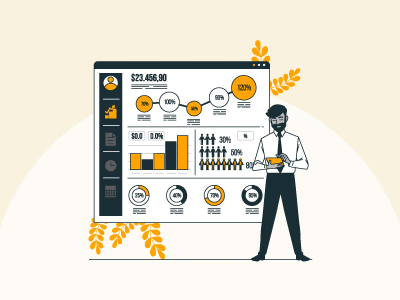
Budgeting is an important yet somewhat difficult aspect of project management. If it isn’t done right, then projects can quickly run into cost overruns, delays, or resource shortages. Therefore, the importance of properly managing a budget cannot be overstated, especially in a discipline with so many moving parts like project management.
However, managing a project budget requires more than just setting financial limits—it demands strategic planning, careful monitoring, and proactive adjustments to keep expenses in check. Due to these complexities, newcomers may find it hard to wrap their heads around budget management.
This article will explore key steps on how to manage a budget in project management, ensuring financial control while delivering successful outcomes.
The following steps outline a comprehensive approach to managing project budgets:

Define Project Objectives And Scope
A well-defined project scope and clear objectives form the foundation of effective budget management. Without a precise understanding of what the project aims to achieve, cost estimation becomes vague, leading to potential overruns and resource misallocation. Conversely, defining the project’s objectives and scope contributes to better budget control.
Having a project scope also ensures that all essential resources—such as personnel, technology, equipment, and materials—are accounted for from the start. This prevents underbudgeting or unexpected expenses later in the project.
Break Down Deliverables Into Sub-Tasks
Breaking down deliverables into smaller, manageable sub-tasks is a critical step in effective budget management. When a project is viewed as a collection of broad deliverables, it becomes difficult to estimate costs accurately. By breaking down each deliverable into its essential components, project managers gain a more detailed understanding of the resources, time, and budget required for each step.
This approach allows teams to assign specific costs to individual tasks, making it easier to track spending at a granular level. For instance, if a deliverable involves developing a software application, breaking it down into tasks such as design, development, testing, and deployment ensures that each phase has a dedicated budget.
Estimate Costs For Each Task
Estimating costs for each task is a crucial step in project budget management, as it ensures that financial resources are allocated appropriately and that there are no unexpected shortfalls.
To achieve accurate cost estimation, project managers must consider all relevant factors, including labor, materials, equipment, and overhead expenses. Each task within a project comes with its own unique cost structure, and failing to account for these expenses in detail can lead to financial overruns.
One of the most effective ways to estimate costs is by using historical data from similar past projects. Reviewing previous budgets can provide insights into common expenses, typical cost ranges, and areas where overruns occurred. This data-driven approach helps in setting realistic financial expectations and reduces the risk of underestimating expenses.
Include Contingency Reserves
Including contingency reserves in a project budget is a proactive approach to managing financial risks and uncertainties. No matter how well a budget is planned, unexpected expenses often arise due to unforeseen challenges such as supplier delays, scope changes, equipment failures, or even regulatory adjustments.
By setting aside a contingency budget, typically ranging from 10-20% of the total project cost, project managers can ensure that unexpected costs do not derail the overall financial plan.
Allocate Resources Effectively
Allocating resources effectively is a crucial aspect of budget management, as it ensures that financial and human assets are used efficiently without unnecessary expenses. Every project requires a mix of skilled labor, materials, equipment, and time, all of which come at a cost. Thus, if project managers properly assign resources based on their availability and financial impact, they can prevent inefficiencies that lead to budget overruns.
One important aspect to bear in mind for resource allocation is matching tasks with the right personnel. Assigning complex or specialized work to the most qualified team members minimizes errors, reduces rework, and enhances productivity, ultimately saving time and money.
However, expertise must be balanced with cost-effectiveness; for instance, relying too heavily on senior professionals for routine tasks can inflate labor costs. A well-planned distribution of responsibilities ensures that skilled resources are used where they add the most value while routine tasks are handled cost-efficiently.
Monitor And Track Expenses Regularly
Regularly monitoring and tracking expenses is crucial for maintaining financial control in a project. Without consistent oversight, small cost overruns can accumulate, leading to significant budget issues. By comparing actual expenses with projected costs in real time, project managers can detect financial variances early and take corrective action before they impact the overall budget.
Consistent expense monitoring also promotes transparency and accountability within the team. When everyone is aware of the financial status of the project, it becomes easier to make informed decisions about resource allocation and spending priorities. Keeping stakeholders updated on financial progress helps build trust and ensures that expectations remain aligned.
Budget management is no easy feat; however, with these steps, it ought to become a far more palatable job. These steps also help with proper planning and scoping, saving your team a lot of effort and future headaches.
However, there are also other ways to improve your budgeting skills beyond just these steps. One of these is utilizing project management software such as Teamwork Software and ClickUp Software. These tools provide a variety of helpful features such as automated tracking, expense management, and forecasting of potential overruns. As a result, monitoring expenses becomes a much more doable job, allowing managers to easily keep track of everything and, thus, keep the costs down.
